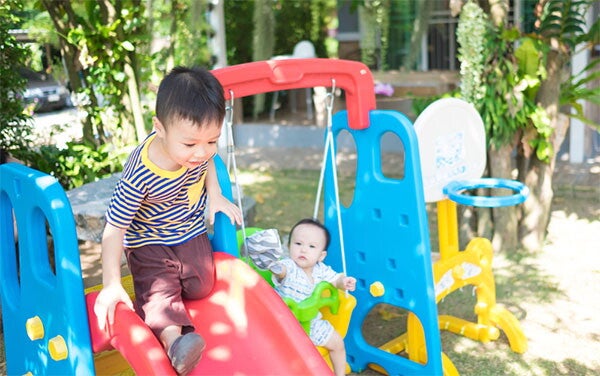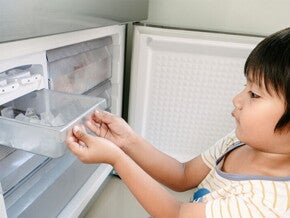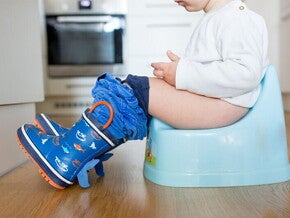
Your 3-year-old seems a little off lately. They tire more easily and often skip outdoor play. And when they walk, you notice their legs look slightly bowed. You're not sure what it is, but you probably never thought these were possible signs of low calcium.
A similar case was published in Pediatrics in Review, where a young boy had these symptoms. The diagnosis? Low calcium levels in the blood or hypocalcemia. It highlights how calcium deficiency can manifest in subtle ways.
So how can you tell your child may have low calcium? And more importantly, what can you do to protect your child before it becomes a bigger health issue? Here's what to watch out for.
Low Calcium Symptoms
Kids require calcium to build healthy bones and teeth. This mineral also supports muscles, nerves, and even the heart. So, understanding what to look for can help you avoid health problems down the line.
Not all children will exhibit low calcium symptoms. But toddlers or preschoolers who do may start describing what they feel as "my hands feel funny" or "my legs hurt."
Nerves and muscles that become more sensitive than usual are common signs of low calcium levels.
Babies can't tell you what they’re feeling, so you often have to rely on what you can see, such as:
- Irritability
- Inconsolable crying
- Stiff muscles
- Twitching or jittery movements, especially around the face or limbs
- Feeding problems
Toddlers and preschoolers may experience:
- Tingling or numbness
- Weakness or fatigue
- Stiff or cramping hands
According to the Pediatrics in Review study, doctors may observe specific signs during a physical examination. For instance, they might notice facial spasm when they gently tap a child's cheek. Or they temporarily cut off blood flow by inflating a blood pressure cuff to check for stiffness in the hands.
What Causes Low Calcium in Kids?

Children require plenty of sunshine to get vitamin D, which helps calcium work effectively in their bodies.
Low calcium levels in children can occur for several reasons. But some of the most common hypocalcemia causes include:
Not enough calcium in their diet
Children with hypocalcemia may lack calcium-rich foods in their diets. And even if they drink milk, it wasn't enough or problems in preparation. For instance, research published in the International Journal of Research in Medical Sciences (IJRMS) found that children under 2 years with low calcium were fed watered-down formula milk.
Vitamin D deficiency
Vitamin D helps the body absorb and balance calcium and phosphate in the body. Without it, calcium wouldn't work as intended. Research also shows that children with hypocalcemia receive less than 30 minutes of sun exposure per week.
Nutrition and medical issues
Children with malnutrition or conditions like rickets are at risk of calcium deficiency. Problems with the kidneys, thyroid, or parathyroid glands can also affect calcium levels.
Why Some Babies Are Born With Low Calcium
Some newborns are diagnosed with hypocalcemia within the first few days after birth due to the following reasons:
- Being born prematurely
- Having a low birth weight
- Experiencing complications during birth
- Being born to a mother with diabetes
- Not growing well while in the womb (intrauterine growth restriction)
If the signs of low calcium are ignored, or if the body continues to struggle with maintaining healthy calcium levels, it can lead to more serious health problems.
Severe hypocalcemia causes seizures, laryngospasm (the muscles in the throat tighten, making it hard to breathe), or, in rare cases, heart failure.
A long-term calcium deficiency during childhood can affect how bones grow and harden, potentially leading to delayed milestones, including stunted growth.
Babies and toddlers who don’t get enough calcium may be slower to sit up, crawl, or walk. It increases the risk of bowed legs or weaker bones later in life.
Recommended Calcium Intake for Growing Kids
A review of the recommended nutrient intake by the Food and Nutrition Research Institute highlights the importance of calcium in supporting a child's growth and development.
From infancy to toddlerhood, the recommended daily intake more than doubles, rising from 200 mg for infants aged 0 to 5 months to 550 mg by age 3 years. Calcium intake needs to increase to 700 mg by age 6 and reach 1,000 mg per day by the time a child reaches 10 years old.
As the numbers show, kids need consistent sources of calcium throughout early childhood and not just during the baby stage.
What to Expect From Your Doctor
If your pediatrician suspects low calcium, they’ll likely order a blood test to check your child's calcium levels. They may also check vitamin D levels, kidney function, or hormones that regulate calcium.
Hypocalcemia treatment depends on the cause of the problem and its severity. For milder cases, you may be advised to incorporate more calcium-rich foods into your child's diet or take calcium and vitamin D supplements, depending on your child's age and needs.
What Parents Can Do to Lower the Risk of Low Calcium

Make sure to keep your child's pediatrician's appointments so they can track your child's growth and developmental milestones.
You can do a lot to lower your child's risk of calcium deficiency, starting from the moment you conceive.
Eat well when you're expecting
Your child builds his calcium supply in the womb, especially during your third trimester. If you're pregnant, getting enough calcium and vitamin D sets up your baby’s bone health from the beginning.
Keep up with regular checkups
Pediatric visits aren’t just for growth charts or immunization. They’re also a chance to ask and catch nutrient deficiencies early, especially in premature babies, picky eaters, or kids with existing health issues.
Know your child's risk factors
If your child was born prematurely, had a low birth weight, or has kidney or thyroid problems, they may be more likely to have low calcium. Discuss with your doctor whether calcium monitoring is necessary.
Don’t forget about vitamin D
Vitamin D helps the body absorb calcium properly. Without it, even a calcium-rich diet won’t be fully effective. Safe sun exposure, vitamin D-fortified foods, and supplements (if prescribed) all play a role.
Watch for signs that are out of the ordinary
Not every twitch or fussiness is a calcium issue, of course. But if you notice a combination of low energy, feeding issues, and muscle-related symptoms, bring them up with your pediatrician.
More than anyone, you know when something’s off with our child, so listen to your instincts. If you notice possible signs of low calcium, even if they seem small, don’t ignore them. Early treatment can prevent more serious issues and help your child grow strong and healthy.
How do you make your family meals nutritious and healthy? Share your tips on the ParenTeam Moms and Dads Facebook Group!
References
“Content - Health Encyclopedia - University of Rochester Medical Center.” Accessed July 18, 2025. https://www.urmc.rochester.edu/encyclopedia/content?contenttypeid=90&contentid=p02376
Goyal, Abhinav, Catherine Anastasopoulou, Michael Ngu, and Shikha Singh. “Hypocalcemia.” StatPearls - NCBI Bookshelf, October 15, 2023. Accessed July 18, 2025. https://www.ncbi.nlm.nih.gov/books/NBK430912/
Johns Hopkins Medicine. “Hypocalcemia in Children,” June 26, 2024. Accessed July 18, 2025. https://www.hopkinsmedicine.org/health/conditions-and-diseases/hypocalcemia-in-children
Stanford Medicine Children’s Health. “Hypocalcemia in the Newborn.” Accessed July 18, 2025. https://www.stanfordchildrens.org/en/topic/default?id=hypocalcemia-in-the-newborn-90-P02376
Malhotra, Yogangi, MD. “Pediatric Hypocalcemia: Background, Pathophysiology, Etiology.” Accessed July 18, 2025. https://emedicine.medscape.com/article/921844-overview#a5
“Office of Dietary Supplements - Calcium.” Accessed July 18, 2025. https://ods.od.nih.gov/factsheets/Calcium-HealthProfessional/
Powell, Jessie. “Calcium - the Nutrition Source.” The Nutrition Source, December 4, 2024. Accessed July 18, 2025. https://nutritionsource.hsph.harvard.edu/calcium/




























